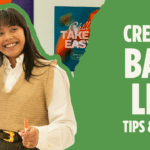Personal Branding: How to Create and Build Credibility and an Authentic Presence
More than ever, personal branding is critical in this digital day and age. As a freelancer, entrepreneur, or professional, it defines how others view you.
You are therefore allowed to express your competencies, values, and personality in such a manner that it may appeal to the target audience.
what is personal branding, and how does one build a strong personal brand from scratch?
In this blog, we are going to go deep and elaborate on what personal branding is, why it matters, and also show some actionable steps on how to create a standing-out personal brand for beginners.
What is Personal Branding?
Branding, in general, is a way of differentiating imagery and identity. It describes how one presents his or her existence in front of people online or offline and how others are going to perceive him or her.
Your personal brand communicates who you are, what you do, and why people should trust or follow you.
It’s way beyond having a great resume or a decent LinkedIn profile.
With personal branding, someone needs to constantly spread his or her story, skills, expertise, and values on the platforms, lining everything up with how they want to be perceived.
Why Personal Branding is Important?
Personal branding is an imperative choice in this competitive market for several grounds:

Differentiation:
A strong personal brand differentiates you from other people who may be in the same business as you. You show your uniqueness-you tell people why they should work with you.
Trust and Credibility:
When you’re building your personal brand, you build trust in an audience; they get to know you and your values; they see you as an expert at whatever it is that you do.
Opportunity:
A clear personal brand attracts opportunities such as speaking engagements, partnerships, job offers.
Networking:
Your personal brand opens various doors to have value with others in your industry.
How to Develop a Strong Personal Brand
Building a personal brand may seem daunting just by the name; actually, it is quite step-by-step. The following steps will be necessary for you to get started:
Define Your Unique Value Proposition
But before creating a personal brand, one has to know what makes him or her unique.
Literally speaking, your Unique Value Proposition is the crossing of skills, experiences, and qualities that make you different from anyone else.
Or, in other words, it’s the reason-the “why”-that your brand exists, or rather, why should people come to you over others?
To define your UVP, ask yourself:
What are my core competencies and strong points?
What values do I stand for?
What am I passionate about?
How can I solve problems for others?
Example:
If you are a digital marketer, then your UVP may sound like this: “I help small businesses grow their online presence through targeted social media strategies and data-driven marketing.”
Beginners’ Tip: Just write down your top strengths and ask your friends, colleagues, or mentors for feedback. Their input will help refine your UVP.
Identify Your Target Audience
Once you know what you bring to the table, the next stage is to determine who your personal brand is for.
With whom would you want to communicate your brand or whom do you want to influence? Identifying your target audience is critical because that defines how you will communicate your message.
In identifying your audience, consider the following:
Who are the people that can benefit from my expertise?
What pain points or challenges are they facing?
Where do they spend their time online?
Example:
In case you are a freelance graphic designer, your potential audience might well be the owners of smaller businesses who want to raise the bar when it comes to branding and visual identity.
Newbie Tip:
Make your audience concrete by naming a real type of person. Instead of “entrepreneurs, for example, you could say “tech startups looking to scale.”
That will then give you a much better idea of the kind of content to build.
In today’s digital world, much of personal branding has to do with your online presence.
Main platforms on which you will be creating your personal brand include a website, social media profiles, and professional networking sites.

Here’s how you get started:
Create a website:
This is your online home base. It should represent all about your bio, your portfolio, your testimonials, and your contact information.
Adding a blog may be great in order to show your expertise.
Optimize Your Social Media Profiles:
Consider the use of LinkedIn, Twitter, and even Instagram-all do a great job in building your personal brand.
Make sure they are complete, consistent, and professional, using one profile photo and bio across all of them.
Create and publish content regularly in the area of your research. what is content marketing
That would be a blog post, it could be a video, it could be infographics, even social media mini posts. Essentially, what is important is to add value and then engage with your audience.
Example:
If you are a career coach, then some tips associated with job interviews, resume building, and personal development should be shared through posts on LinkedIn and blog articles on your site.
The ‘How to’ for beginners: take one or two initially; as time goes by, you scale up as you get comfortable.
If you are more professional, go on to LinkedIn; if you are more creative, then go to Instagram.
Deliver Value Consistently
Building your personal brand is all about consistency. You need to show up regularly and offer some kind of value if you want recognition and trust with your audience.
That means creating content that educates, inspires, or solves a problem for your following.
Consider developing a content calendar in which you plan your posts in advance. It could help in keeping you organized and regularly posting quality content.
The type of content one can post will include the following:
Educational content:
One shares tips, tutorials, or how-toss about one’s profession.
Your personal story:
Let the audience know who is behind the brand.
You will be sharing stories about yourself, your journey, your struggles, and successes.
Engagement posts:
Ask questions; make polls and try to get the audience sharing your thoughts.
Example:
As a wellness coach, you can publish daily health tips on Instagram once a day, posting of weekly workouts, or successful client stories.
Beginners’ tip:
Start small with weekly or bi-weekly posts until you get comfortable increasing your frequency.
Networking and collaboration
Personal branding involves not only what you know but also whom you know.
Relationship building and networking with other people in your industry will reinforce your brand and bring new opportunities your way.
Engagement:
Comment on other people’s posts, join industry-related groups, and attend networking events-both online and offline.
Collaboration:
Find other professionals within your line of business and collaborate to expand your audience.
Ways you may be able to collaborate with others include guest blogging, being a guest on a podcast, or even webinars.
WHAT IS SEO (search engine optimization)
Sample:
A photographer may want to partner up with a wedding planner, offering his photography skills in return for the planner expertise, opening up his business to a whole new market.
Introductory Tip:
Never be afraid to reach out to your heroes in your industry. It can be as simple as responding to a comment or an email where you introduce yourself and add value.

Best Practices of Personal Branding
As you build your personal brand, here is something to ponder on:
Be Authentic
It should be you and not impersonation; people like realness, and it works in forging long-term relations.
Be Consistent
You have to have consistency in the message, tone, and also visuals. Your audience needs to feel like they know what to expect from you, whether through social media posts, blog articles, or personal interactions.
Give Without Expecting
Your personal brand has to be all about give and take. Give quality content, worthwhile insight, and support before expecting to sell your services or products. This will, in due time, help to build trust and loyalty.
Conclusion: Ready to Build Your Personal Brand?
Personal branding is something that takes time, effort, and a strategy behind: one that defines your value unique, targets the proper audience, creates an online presence, and delivers value consistently so your brand will become remarkable and stick in people’s heads, opening opportunities.
Now that you have an idea of what personal branding is, it’s time to go into action: define your value proposition, create or optimize your online profiles, and start sharing content relevant to your audience.
Your personal brand is an investment in your future. Put more in and see greater returns in career growth, opportunities, and credibility.
Now it’s your turn to build your personal brand. Get started today!




